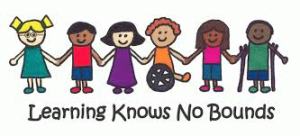GenEd Differentiation: SPED’s Been Ahead of the Game for Years
by Sam LeDeaux • • 0 Comments
With a different kind of emphasis and focus recently (last couple decades or so) on mainstream differentiation, I think we must turn to our SPED educators for guidance. They’ve been doing it all along.
The premise of special education is to work with colleagues and families to devise an individualized education plan (IEP) to meet kids at their learning readiness levels. Recent mandates and expectations have placed the same accountability on general education teachers for mainstreamed students.
To plan for and accommodate the standard three traditional learning levels (“on level”, “below level”, and “above level”) are no longer enough. The reality has always been that in a classroom of X kids, there are X different readiness levels. In the past, grouping students into 3 instructional cohorts was acceptable(?); however, this is not acceptable in the current era of education. General educators are under more and more pressure (some mandated, and some from personally high expectations and passion for their craft) to cater to each individual learning readiness level in the classroom; in essence, to create personalized learning paths–or individualized education plans–for each and every student.
In theory, I believe every educator wants to do this; however, in reality, it is a challenge–and not an area of strength–in public education. Time, resources, and manpower are just a few constraints that make this task challenging. I believe 3 things can help alleviate this stress and promote work toward accomplishing this great task:
1. Collaborate & confer with your SPED staff. This is the work they’ve always done for kids. Working with all staff who have any kind of relationship with the student (academic, social, emotional), along with parents, as a team to target strengths and areas for improvement is their everyday job. They design goals and plans to reach said goals. They continuously check in with one another, formally and informally, monitoring progress along the way, always including parents. They make adjustments as necessary, always in an effort to create success, build confidence, and foster independence.
2. Stay current and implement best practices: multidisciplinary, project based, inquiry based, backward design, Maker Education, genius hour, to name a few. These practices can empower learners (including the teacher and parents as learners) to take ownership of the learning process. When this occurs, you’ve essentially increased the resource of instructional manpower in your classroom.
3. Leverage the resources available to you. For example, there are so many apps and social media platforms that can be utilized to foster collaboration. Collaboration can take place among learners within the classroom, grade level, school, GenEd Differentiation: SPED’s Been Ahead of the Game for Years | Connected Principals:
1. Collaborate & confer with your SPED staff. This is the work they’ve always done for kids. Working with all staff who have any kind of relationship with the student (academic, social, emotional), along with parents, as a team to target strengths and areas for improvement is their everyday job. They design goals and plans to reach said goals. They continuously check in with one another, formally and informally, monitoring progress along the way, always including parents. They make adjustments as necessary, always in an effort to create success, build confidence, and foster independence.
2. Stay current and implement best practices: multidisciplinary, project based, inquiry based, backward design, Maker Education, genius hour, to name a few. These practices can empower learners (including the teacher and parents as learners) to take ownership of the learning process. When this occurs, you’ve essentially increased the resource of instructional manpower in your classroom.
3. Leverage the resources available to you. For example, there are so many apps and social media platforms that can be utilized to foster collaboration. Collaboration can take place among learners within the classroom, grade level, school, GenEd Differentiation: SPED’s Been Ahead of the Game for Years | Connected Principals:

